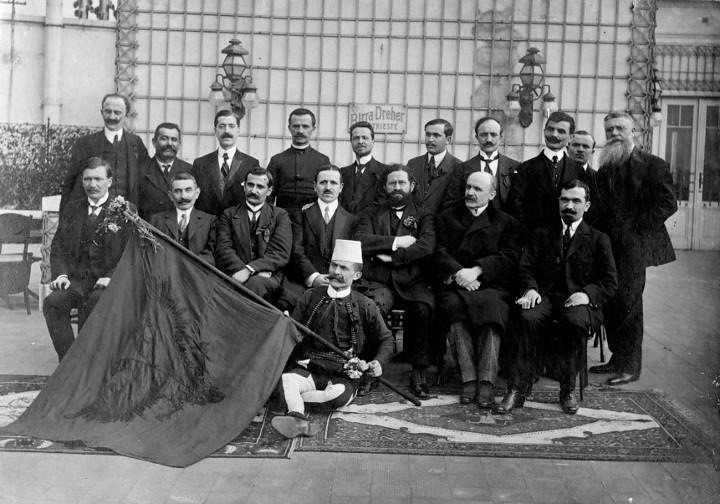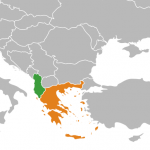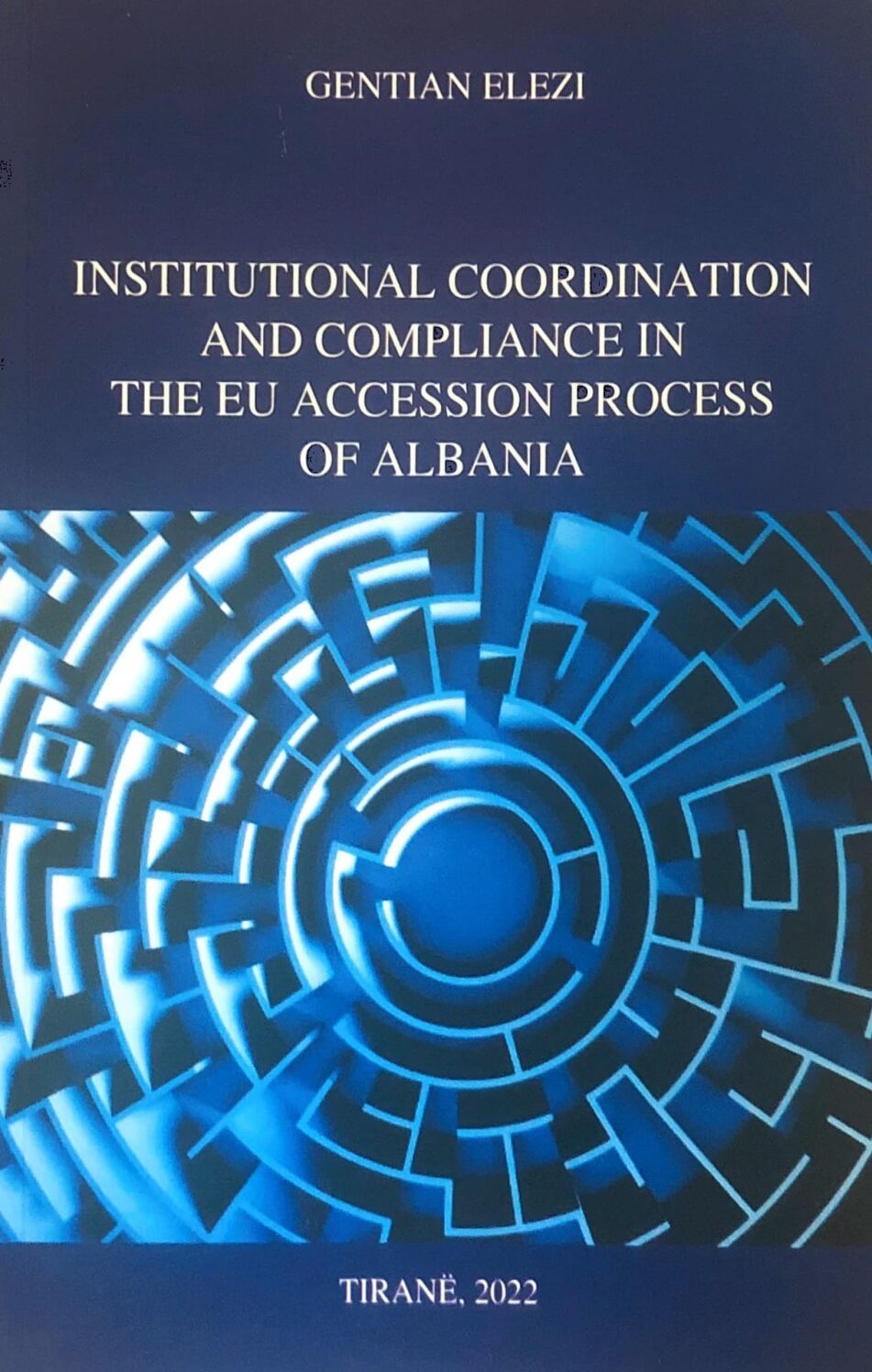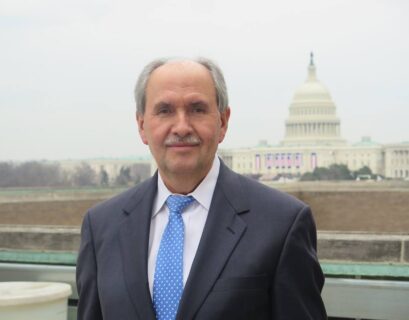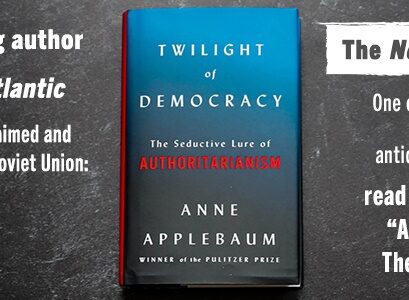NIKOLLA PANO
The Albanian Struggle in the Old World and New provides an interesting and valuable account of the first four decades of the Albanian-American community in the State of Massachusetts. This community, which was concentrated in Boston, was the first of the Albanian settlements in the United States and it was the largest and most important of them from the beginning of the 20th century up to the end of the 1960’s. Indeed, by 1914 Boston was the undisputed capital of the Albanian-American colony which had by this time emerged as the most important center of Albanian nationalism and patriotic activity in the Diaspora.
The Albanian colony in Massachusetts was founded in 1892 when seventeen young Albanian men from Katundi arrived in Boston accompanied by their guide and leader, Nicholas Christopher (Koli Kristofor), who had originally come to the United States in 1886 and is regarded as the first permanent Albanian settler in this country. These early arrivals had expected to remain in the United States only until they had made their fortunes. Once they achieved this goal, most planned to return to the homeland where they would use their newly acquired wealth to better themselves and their families by purchasing farmland or establishing a small business. But these dreams proved illusory as most of the initial group of immigrants and those who had followed them found it difficult to support themselves from the meager income they earned at the factory, restaurant, or unskilled labor jobs they were able to obtain, let alone, amass any wealth.
Despite the harsh realities of the lives they led that are accurately and graphically portrayed in the book, the slow but steady flow of young Albanian males to Massachusetts as well as to other New England and mid-Atlantic states continued during the first and second decades of the 20th century. As the authors of the book observe, it was difficult to estimate the population of the Albanian-American community owing to the fact that most Albanian immigrants had arrived in the United States with Ottoman, Greek, or other passports. It appears, however, that there may have been approximately 10,000 Albanians residing in the United States by 1914.
In addition to its working class population, the Boston Albanian community also attracted a number of patriotic intellectuals such as Sotir Peci, Fan Noli, Faik Konica, Koste Chekrezi, Kristo Dako, Sevasti Qiriazi Dako, Parashkevi Qiriazi, among others. These gifted patriots sought to raise the educational level and national consciousness of their compatriots and subsequently to mobilize them to secure and safeguard the independence and territorial integrity of the fledgling Albanian state—especially during its time of troubles between 1912-20.
With the support of the expanding Albanian-American community and with the charismatic Fan Noli and Faik Konica in the forefront, this newly emerging community leadership between 1908-12 created three institutions which served to reinforce the National identity of the Albanians of America and to mobilize them to effectively serve the national cause. These were the establishment of the Albanian Orthodox Church in America (1908), the newspaper Dielli (1909), and the Pan-Albanian Federation of America (VATRA) (1912). The headquarters for these three institutions, whose activities are recounted in this book and elsewhere, were located in Boston, thus insuring that the Massachusetts Albanian-American community would continue to play a central role in Albanian activities in the United States.
The influence and prestige of the Massachusetts Albanian-American community was at its height between 1912-21 when Albania had been invaded and occupied by various belligerent states and lacked a functioning central government. During this dark period in the nation’s history, the Albanian-American community through VATRA, Dielli, and the Albanian Orthodox Church conducted a vigorous public relations and lobbying campaign in behalf of Albania. The community also raised nearly $200,000 between 1917-20 (approximately $4 million in current valuation) to finance the Albanian delegations and spokespersons at the Paris Peace Conference. It is generally recognized that these efforts along with Noli’s successful advocacy for Albania’s admission to the League of Nations made significant contributions to the restoration of Albania’s independence during and following World War I.
By 1921, however, conditions in Albania and the Albanian-American community had changed. Albania now had a functioning government, the foreign troops in the country had been withdrawn, Albania’s independence had been formally reaffirmed, and the country was in the process of normalizing its relations with other states. The Albanian government had, however, expressed its gratitude to the Albanian-American community by authorizing it to elect one member to the country’s Parliament. Noli was elected to this position, thus propelling him directly and the Albanian-American community vicariously into the maelstrom of Albanian politics between 1921-24.
The demise in December 1924 of the short-lived Noli “revolutionary” government resulted in a definitive shift in the focus of the Albanian-American community from the problems of the homeland to coping with challenges of life in the United States. Furthermore, with Noli in exile in Europe, Konica accepting the post of Albanian minister to the United States and the departure from the United States to Albania of Chekrezi, Dako, the Qiriazi sisters along with other prominent community personalities, a leadership vacuum which Konica unsuccessfully sought to fill had emerged. Those Albanian-Americans who, with varying degrees of interest, followed developments in the homeland were divided into pro- and anti-Zog factions and these divisions also negatively impacted the activities and effectiveness of the VATRA and the Albanian Orthodox Church in America. These ongoing controversies also served to alienate some of the younger and better educated Albanian-Americans from the community.
The community itself during the 1920’s and 1930’s was undergoing a transformation as some of the early immigrants decided to return to Albania. Others, however, brought family members to the United States or visited Albania in search of a wife and these couples returned to the United States to start a family and a new life. Thus, Albanian-Americans in ever growing numbers were increasingly focused on fulfilling the economic and social responsibilities to their families, especially during the era (1929-39) of the Great Depression.
As the authors of this book recount, the impact of the Great Depression not only created economic hardships for Albanian-American households but also undermined the viability of VATRA and Dielli and posed difficulties for some Albanian Orthodox parishes. It is no exaggeration to observe that the Massachusetts Albanian-American community had fallen on hard times between 1929-39. It would take the shock of the Italian invasion and occupation of Albania in April 1939 to revitalize the divided and dispirited Albanian community in the United States. The chronological coverage of the book ends at this dramatic juncture.
The Albanian community again rose to meet this new challenge to the homeland’s independence and territorial integrity under the leadership of Noli, who had returned to the United States in 1932, and Faik Konica. With the death of Konica in 1942, Noli persevered in his efforts sometimes in concert with Chekrezi, who had established in December 1941 his Free Albania Central Committee in Boston. The post-World War II fate of Albania would be determined by the battlefield successes of the communist-dominated Albanian Army of National Liberation and the dynamics of the Cold War. With the ensuing 52-year hiatus of U.S.-Albanian diplomatic ties, there would be only limited contacts between Albanian-Americans and their compatriots in the homeland.
Up until the 1950’s, social and cultural life in the Massachusetts Albanian-American community had changed relatively little from that described in the final chapter of the book. But developments during the decade of the 1950’s and beyond were gradually altering the character of the community as many of the Boston Albanian-Americans who had prospered during the World War II and immediate post-World War II eras began to move from the compact ethnic enclaves of the West End, South End, and South Boston. While the first generation of these suburban immigrants continued to observe traditional Albanian customs and practices which they had brought to the United States and to participate in community activities, their sons and daughters were less likely to do so. This trend towards Americanization became more pronounced during the 1960’s as the number of Albanian-Americans, both males and females, who had earned university degrees rose dramatically and as greater numbers of them married non-Albanians. With increasing frequency these offsprings, the first generation Albanian-Americans, have been pursuing lives and careers beyond the confines of the community, as have their children and grandchildren.
As the cohesion of the first generation Albanian-American community has been eroding over the past six decades, the Albanian-American community itself has been replenished with the new blood of the post-World War II political immigration; the immigration from Kosova, Macedonia and Montenegro from the 1960’s to the 1990’s and from the post-1990 immigration from Albania. Unlike their first generation counterparts, these more recent immigrants have come from all regions of Albania as well as the Albanian-inhabited territories outside the boundaries of the homeland. They have settled in all parts of the United States with the greatest concentrations found in the New York-New Jersey, Detroit, Chicago, and New England areas. As a consequence of this recent migration, New York City has replaced Boston as the center of the Albanian-American community. And this reality is symbolized by the fact that the headquarters of VATRA and Dielli are now located there. The offices, library, and archives of the Albanian Orthodox Archdiocese have, however, remained in Boston.
The purpose of this book was to provide its mainly non-Albanian audience with an overview of Albanian history, some insights into the life and struggles of the Albanian community in Massachusetts between 1900-1939, and an introduction to Albanian social and cultural life. Given the context of the time in which it was written and to the readers to whom it was directed, the book, in my view, succeeds in fulfilling these objectives.
Additionally, this book should provide its Albanian readers with an appreciation of the harsh realities of immigrant life in the United States during the first four decades of the 20th century. This work should also heighten respect for the sacrifices made by that first generation of Albanian-Americans in support of efforts to preserve Albania’s independence and territorial integrity during one of the most critical periods in the nation’s history. Furthermore, the book should contribute to a better understanding of the importance which these earliest Albanian immigrants attached to the preservation of their cultural heritage.
The quality of the book is enhanced by the research and writing contributions of the Albanian staff members such as Qerim Panariti, Vangjel Misho, Efthim Naci, Thoma Nassi and Peter Peterson on this project. It was my pleasure to have met or known these splendid persons during the time I was growing up in the community that is the focus of this book.


